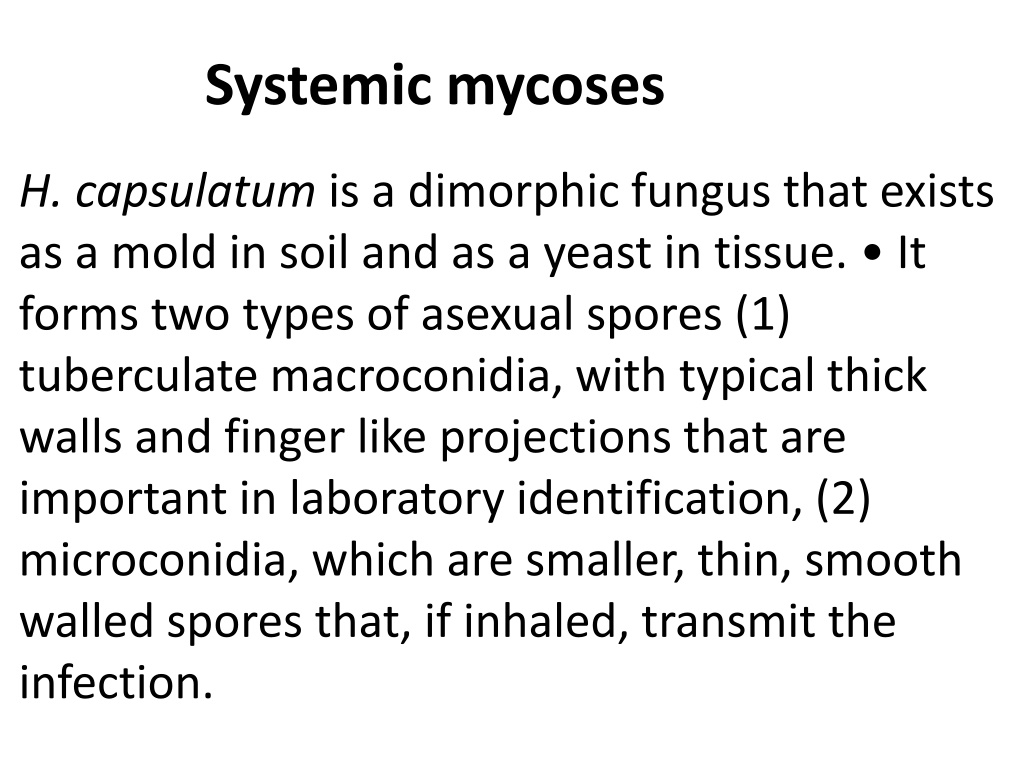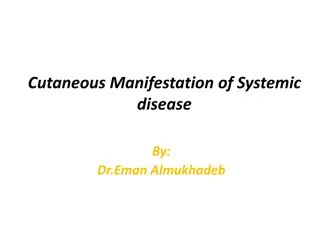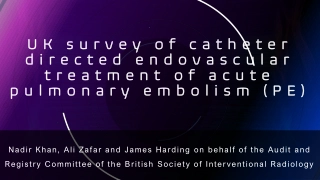Systemic mycoses
Systemic mycoses are fungal infections caused by dimorphic fungi such as Histoplasma capsulatum, Blastomyces dermatitidis, and Cryptococcus neoformans. Histoplasmosis is transmitted through inhalation of spores from soil or bat-infested caves, presenting with tuberculate macroconidia and microconidia. Blastomycosis results from inhaling conidia, leading to pulmonary infection and potential dissemination to skin, bone, and prostate. Cryptococcus neoformans is commonly found in aged pigeon droppings and C. gattii in the litter around eucalyptus trees, with both species considered principal pathogens in humans.
Download Presentation
Please find below an Image/Link to download the presentation.
The content on the website is provided AS IS for your information and personal use only. It may not be sold, licensed, or shared on other websites without obtaining consent from the author. Download presentation by click this link. If you encounter any issues during the download, it is possible that the publisher has removed the file from their server.
Presentation Transcript
Systemic mycoses H. capsulatum is a dimorphic fungus that exists as a mold in soil and as a yeast in tissue. It forms two types of asexual spores (1) tuberculate macroconidia, with typical thick walls and finger like projections that are important in laboratory identification, (2) microconidia, which are smaller, thin, smooth walled spores that, if inhaled, transmit the infection.
Transmission & Epidemiology of Histoplasma In areas of endemic infection, excavation of the soil during construction or exploration of bat infested caves has resulted in a significant number of infected individuals. In several tropical African countries, histoplasmosis is caused by Histoplasrna duboisii. The clinical picture is different from that caused by H. capsulatum
ECOLOGICAL ASSOCIATION Blackbird roosts Bats Bat guano Chicken houses Pathogenesis & Clinical Findings of Histoplasma Inhaled spores are engulfed by macrophages and develop into yeast forms. In tissues, H. Capsulatum occurs as an oval budding yeast inside macrophages.The yeasts survive within the phagolysosome of the macrophage by producing alkaline substances, such as bicarbonate and ammonia, that raise the pH and thereby inactivate the degradative enzymes of the phagolysosome The organisms spread widely throughout the body; especially to the liver and spleen, but most infections remain asymptomaric, and the small grantdomatous foci heal by calcification.
Blastomycosis Is similar to histoplasmosis, is a primary pulmonary infection resulting from inhalation of conidia from the mycelial phase of Blastomyces dermatitidis which convert in vivo to the parasitic yeast phase. Blastomycosis (due to B dermatitidis) in the blastoconidial phase also causes a primary pulmonary infection. The organism elicits a granulomatous reaction often associated with a marked fibrotic reaction. The clinical pattern of pulmonary blastomycosis is one of chronic pneumonia. Dissemination occurs most commonly to the skin, bone, and, in males, prostate.
Cryptococcus neoformans Although the genus Cryptococcus contains more than 50 species, only C neoformans and Cryptococcus gattii are considered principal pathogens in humans. Previously, C neoformans was defined as having two varieties var neoformans and var gattii. However, based on the elucidation of the genomic sequences, C neoformans and C gattii are now considered two distinct species. C neoformans is the most common species in the United States and other temperate climates throughout the world and is found in aged pigeon droppings. Until recently, C gattii was found principally in tropical and subtropical climates. C gattii is not associated with birds but grows in the litter around certain species of eucalyptus trees.
Worldwide, C neoformans serotype A causes most cryptococcal infections in immunocompromised patients, including patients infected with HIV. For unknown reasons, C.gattii rarely infects persons with HIV infection and other immunosuppressed patients. Patients infected with C gattii are usually immunocompetent, respond slowly to treatment, and are at risk for developing intracerebral mass lesions (eg, cryptococcomas). C neoformans reproduces by budding and forms round yeastlike cells that are 3-6 m in diameter. Within the host and in certain culture media, a large polysaccharide capsule surrounds each cell. C neoformans forms smooth,







































